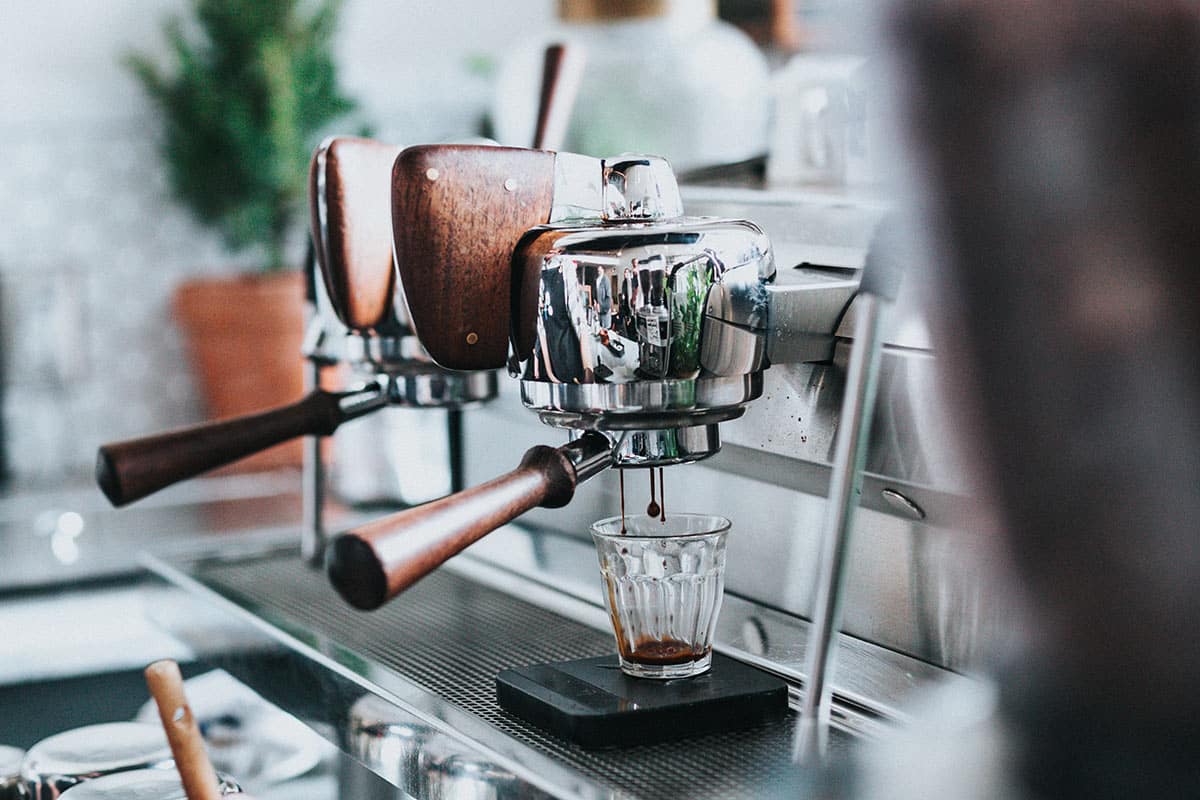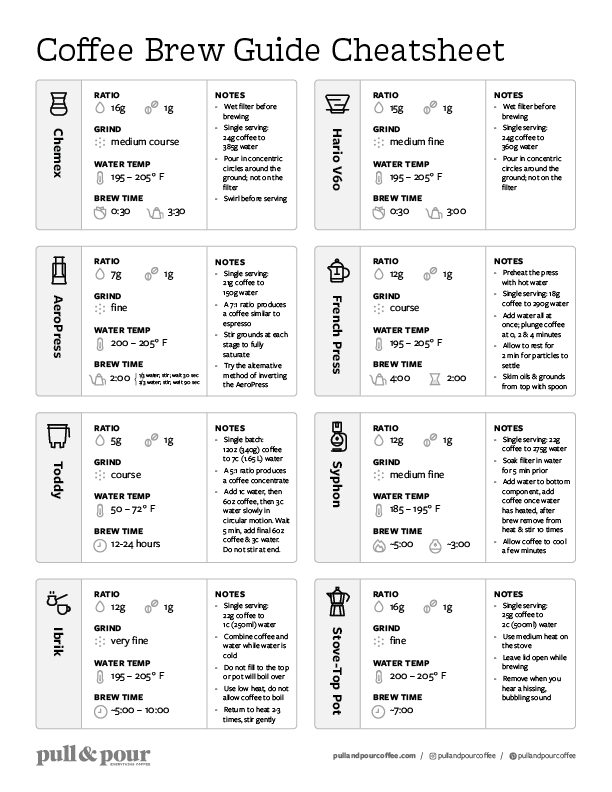A few months back I took a sip of a really, really good espresso. It was very rich, creamy. There was a layer of crema, that golden foam floating on top. It sparkled with a bit of acidity and chocolate notes—just sumptuous. And I began to wonder who woke up one day and thought, you know what we should do? Let’s make a really short, intense coffee by grinding the coffee super fine and pushing the water through with a lot of pressure. That is how you make a good espresso. But who came up with that idea? Let’s explore some of the highlights of the history of the espresso machine. My name is James Harper and I’m the creator of the Filter Stories and The Science of Coffee podcast. This article is a variation of the Espresso Technology episode from The Science of Coffee podcast, which you can listen to here.
Angelo Moriondo: The Beginnings of Espresso
In the late 1880s, a man named Angelo Moriondo, the owner of a grand hotel and café in Turin, Italy, faced a problem: it took too long for his guests to receive their coffee after they placed their order. Determined to serve coffee more quickly, he devised a machine that used steam to push hot water through half a kilo of ground coffee, resulting in what he called “caffe instantaneo.” While the machine succeeded in speeding up the coffee-making process, it fell short in producing true espresso. The coffee it made lacked the rich, creamy mouthfeel associated with espresso, resembling more of a filter coffee. Despite its limitations, Moriondo’s machine laid the foundation for future advancements in espresso technology.
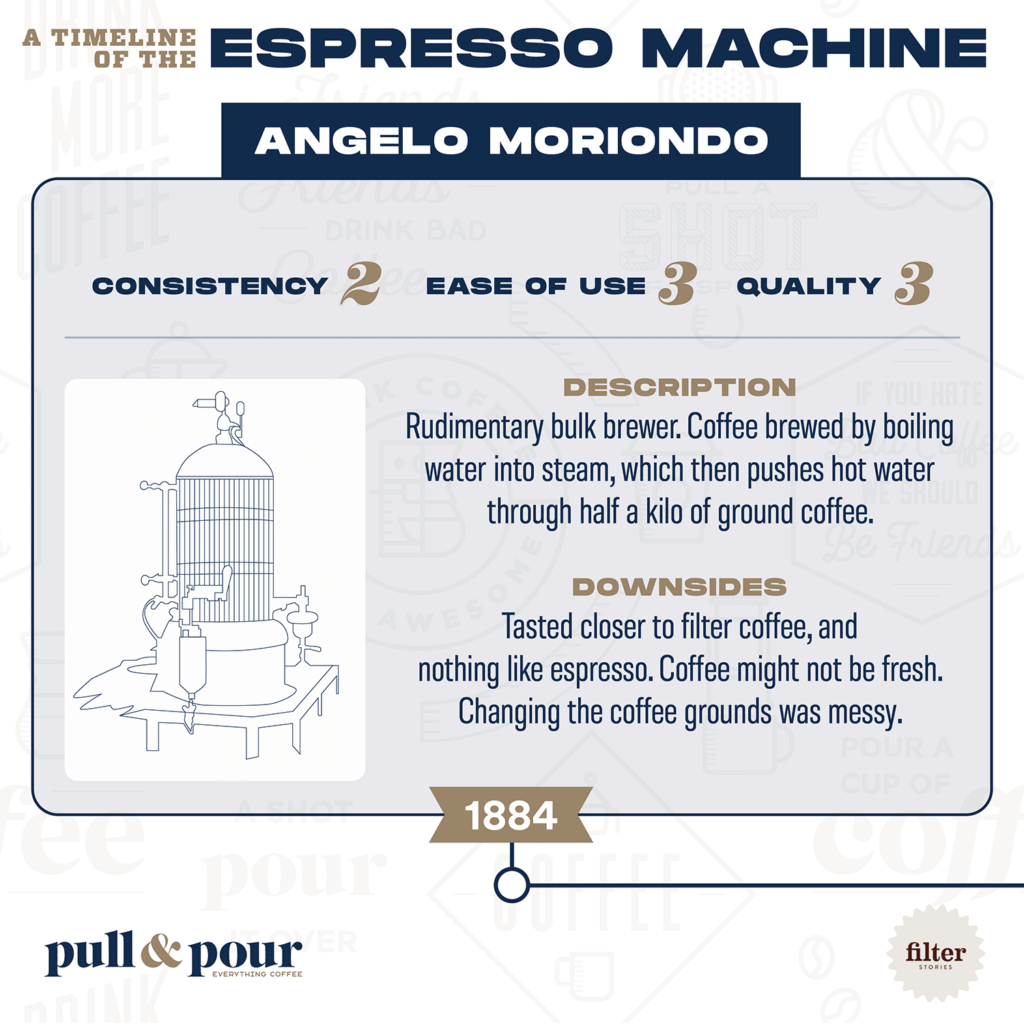
La Pavoni Ideale: First Commercial Espresso Machine
The La Pavoni Ideale espresso machine was one of the first commercial espresso machines introduced in the early 20th century. These ornate machines, resembling fire hydrants with proud metal eagle embellishments on top, found their way into hotels and bars across Italy. While they improved upon Moriondo’s coffee freshness issue with a porter filter for fresh coffee orders, they had significant flaws. The machines could be extremely dangerous, as they operated under high pressure, leading to potential explosions and accidents for the baristas. Apart from the safety concerns, the quality of coffee brewed by these early machines was far from satisfactory. The espresso made with super hot steam resulted in highly extracted, strong, and bitter coffee, more akin to Italian stove-top coffee than the creamy, luscious espressos we know today.
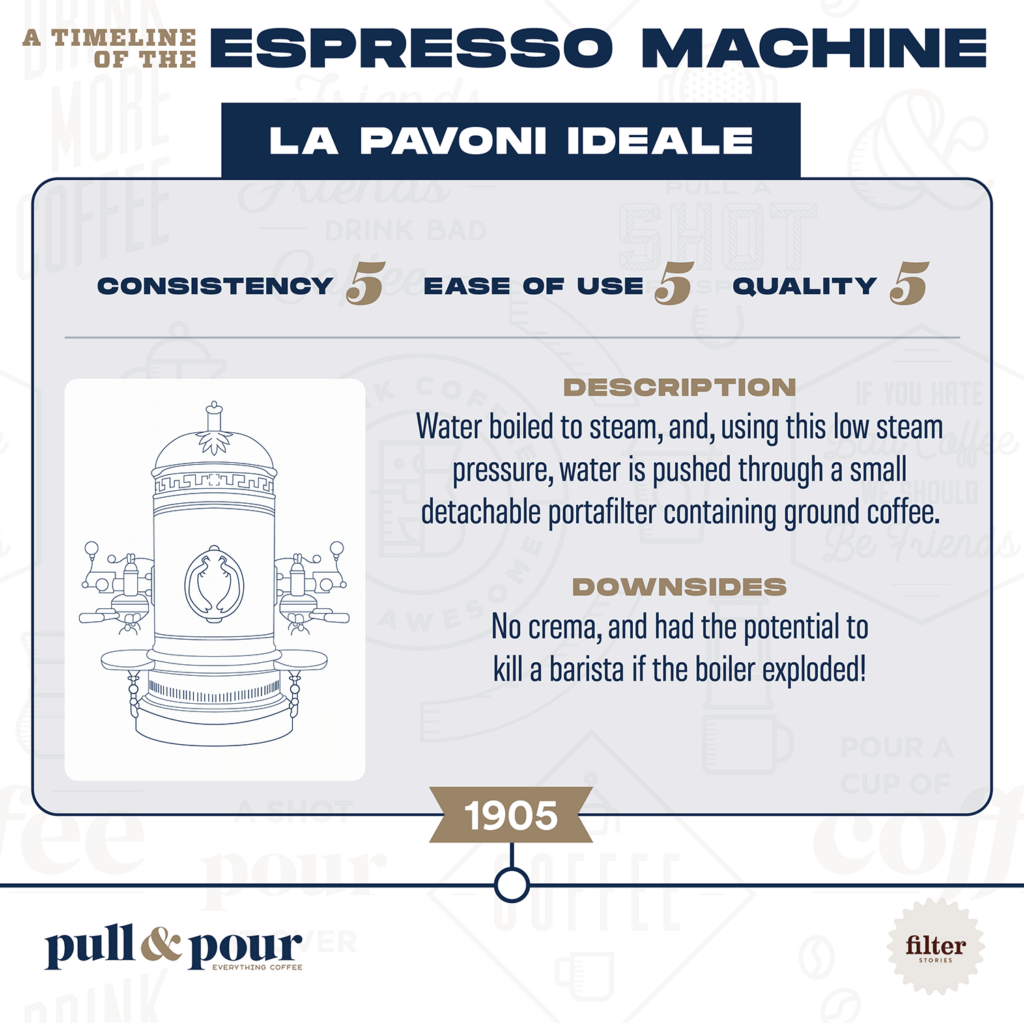
Gaggia Tipo Classica: Piston Lever Espresso Machine
In the late 1940s and early 1950s, espresso machines took a significant step forward with the introduction of the Gaggia Classico piston lever espresso machine. This machine was a game-changer, producing what we now recognize as true espresso, with a rich, creamy, and sumptuous taste. Most importantly, the Gaggia Classico was the first to create the coveted crema on top of the coffee, leading to the drink being called “Crema Café” to distinguish it from previous espresso variations. The addition of a lever allowed for higher pressure, resulting in a finer grind of coffee powder and the formation of crema. While the Gaggia Classico was a major improvement over earlier machines, it was not without flaws. Maintaining a consistent brewing temperature proved challenging, resulting in occasional sour-tasting shots. However, the most significant issue was the potential danger posed by the lever mechanism. Baristas had to be careful when operating the lever, as it could spring back violently if not clicked into place correctly. This led to unfortunate accidents and injuries!
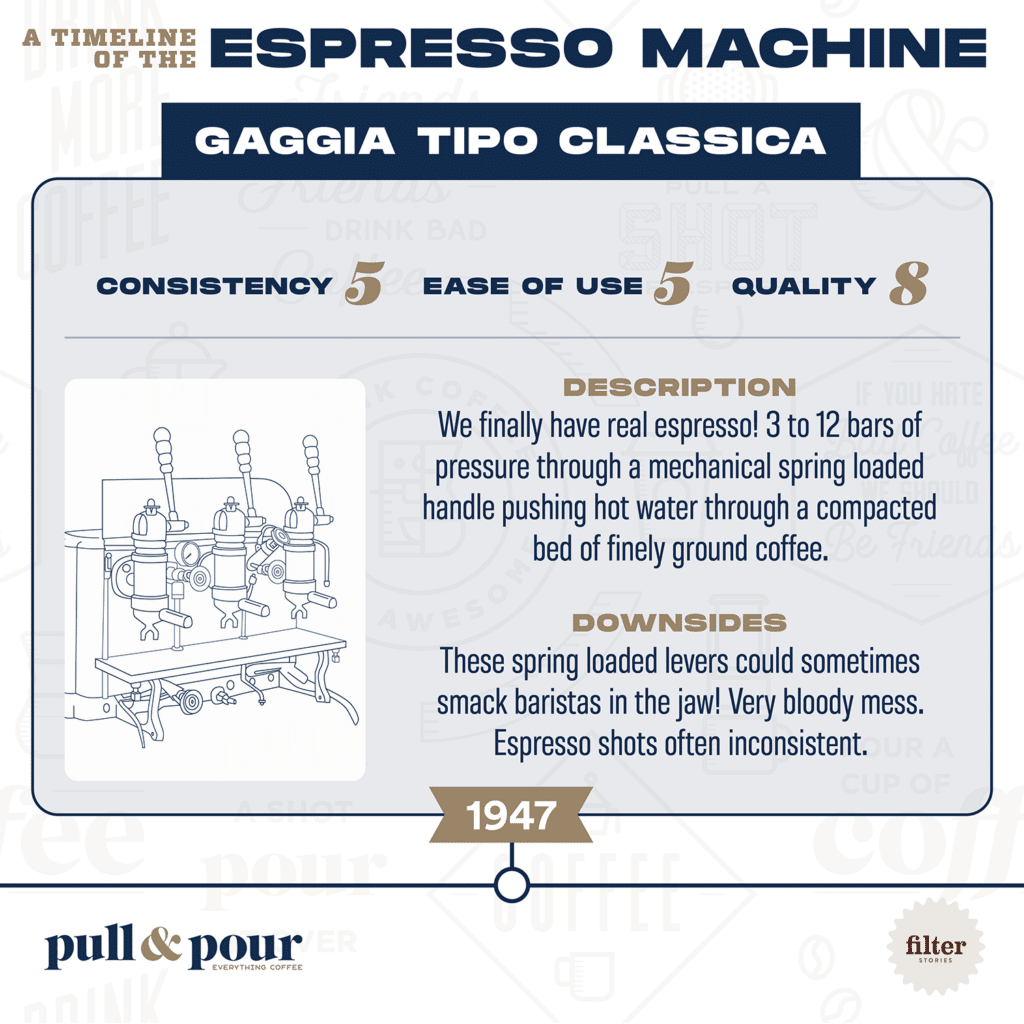
La Faema E61: First Modern Espresso Machine
In the early 1960s, the La Faema E61 espresso machine marked a significant advancement in espresso technology. It featured two major innovations: a pump that provided the necessary pressure for brewing and a heat exchanger that ensured consistent brewing temperatures. With the pump generating nine bars of pressure, the dangerous lever mechanism was no longer needed, making the process safer and more efficient. The heat exchanger allowed baristas to make multiple espressos without waiting for the boiler to refill and reach the right temperature, improving the overall espresso-making experience. While modern-style espresso machines have seen incremental improvements, they still face two major challenges. Firstly, the repetitive motion of inserting the portafilter into the group head can lead to repetitive strain injuries for busy baristas. Secondly, achieving consistently good espressos requires well-trained baristas, as various factors, such as tamping pressure, coffee dose, and grind size, can impact the final result. Despite the advancements, training skilled baristas remains a significant concern for cafe owners.
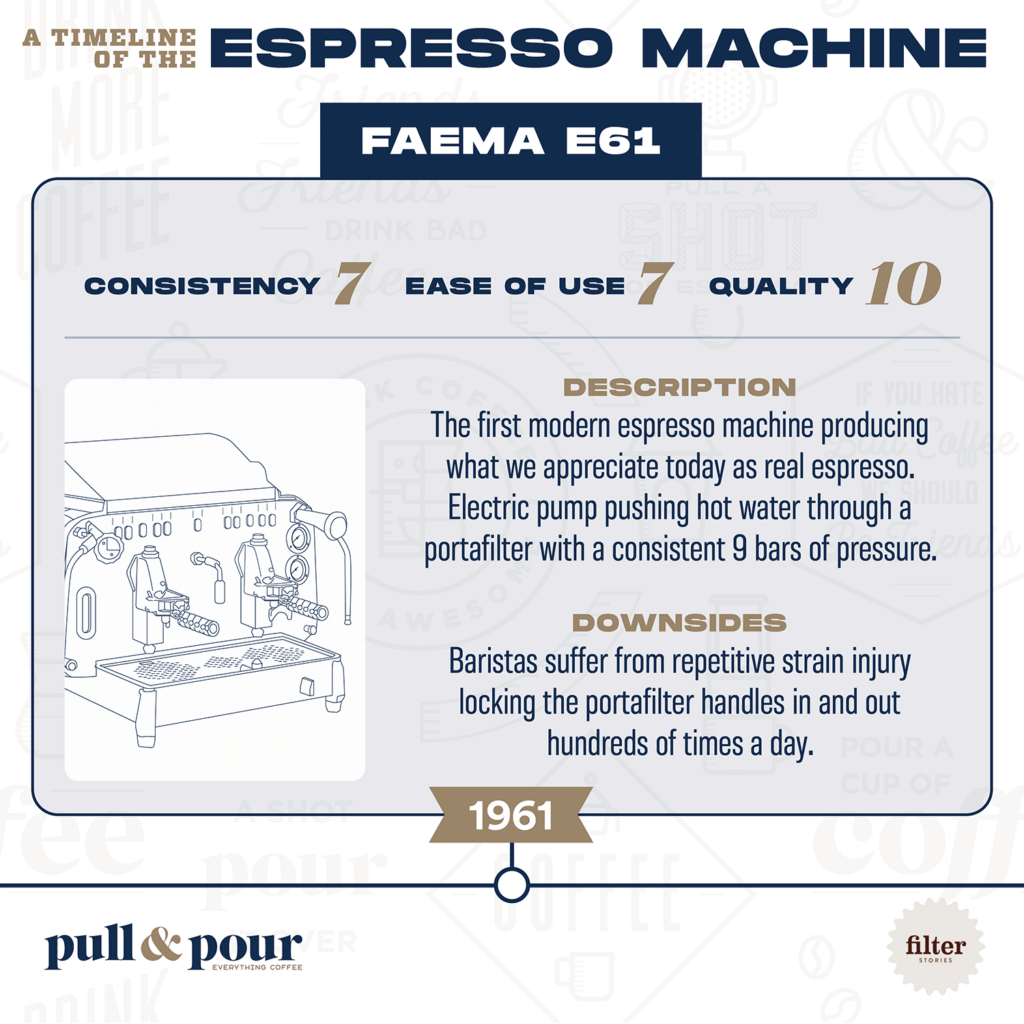
Eversys: Super Automatic Espresso Machines
In the late nineties, Starbucks was one of the early adopters of super automatic espresso machines, which aimed to replace the barista entirely by automating the brewing process. The Eversys, a leading brand in this field, has made significant strides in replicating the barista’s actions through innovative modules within the machine. By breaking down every barista movement into modules, Eversys achieves precision in brewing espresso. The process is efficient, with just three components—a metal cylinder and two plugs—working together to produce delicious, creamy espresso with a layer of crema. Although super automatics have sparked debates in the coffee community about the role of baristas, the machines still require experts who understand how to adjust parameters to extract the best flavors.
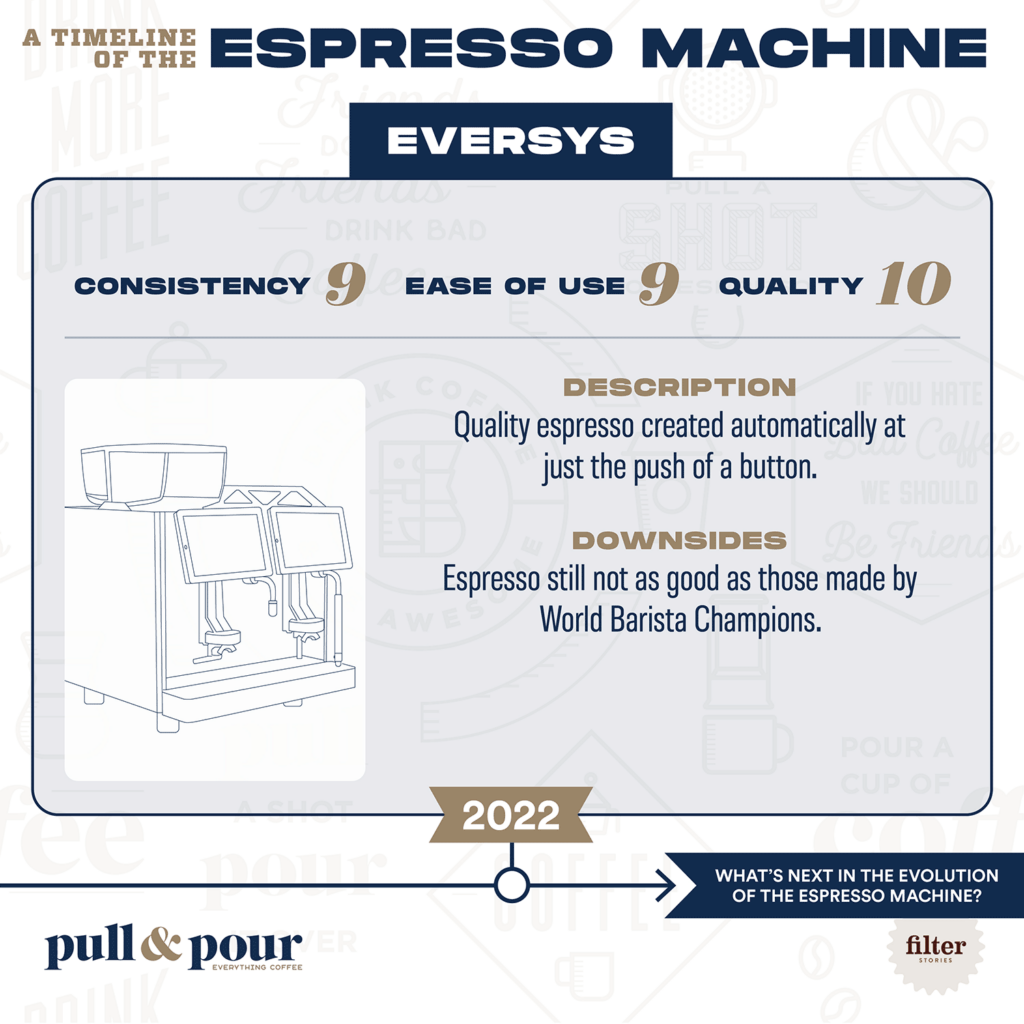
In Conclusion
Even with the incredible technology behind the Eversys, it still is not a perfect machine. What if we could do away with the skilled operator entirely? What if you just poured a bag of beans in the top and the machine instantly understood what the beans are and how to make the most sublime espresso for your unique tastes? And if and when we ever figure that out, even that’s not going to be perfect because you know what’s even more perfect than that? Making it cheap enough to put in my kitchen. And this is what I really enjoyed as I explored the history of espresso machine technology. The goalposts keep shifting and engineers rise to the challenge and find the most surprising ingenious solutions, and I just cannot wait to see where we head next.
Photo Credit: Image by Tyler Nix via Unsplash
